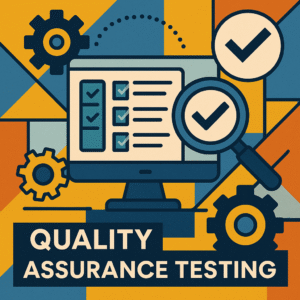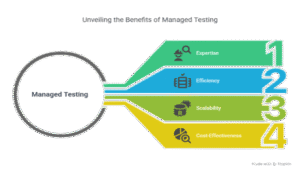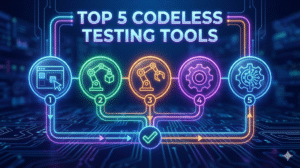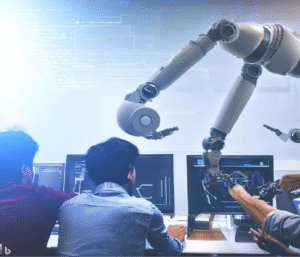Are Robots Replacing Us? What It Means for Test Automation

Keywords: AI test automation, future of QA jobs, codeless testing, will AI replace testers
The Rise of Automation in Software Development
The emergence of AI-powered tools and automation has reignited fears about machines replacing humans in the workforce. After all, automation tools don’t need breaks, don’t demand salaries, and don’t make careless mistakes. In a world driven by productivity and profit, replacing humans with machines sounds inevitable.
This fear is nothing new — similar concerns surfaced during the first industrial revolution. But this time, the combination of AI, machine learning, and robotics makes the conversation feel much more real.
So, should test engineers be worried?
Will AI Replace Test Engineers or Help Them Evolve?
According to industry leaders, the answer is more optimistic than fearful.
“Automation has been around for a long time — what’s changed is the speed at which it’s happening.”
— Paresh Goel, CTO, Career PowerAs Sameer Bora from Next Education highlights, while some tasks are automated, test engineers are still needed to design, oversee, and optimize these automated tests. AI may be the driver, but humans are still behind the wheel — at least for now.
The Impact of AI and Automation on QA
AI and automation tools are transforming software testing in fundamental ways. What was once a manual, time-intensive process is now a streamlined, tech-supported workflow.
In particular, AI in testing is being used to:
- Identify repetitive bugs through machine learning models
- Run and re-run thousands of test cases
- Optimize regression testing cycles
- Predict system failures through predictive analytics
That said, AI automation still lacks the creativity and contextual judgment of human testers — especially in areas like exploratory testing or UI testing.
What Roles Are Most at Risk of Being Replaced?
Jobs that are repetitive, rule-based, and offer little variety are most at risk. In QA, this includes:
- Writing and executing static test cases
- Monitoring results from standard regression testing
- Repetitive UI testing
These tasks are prime targets for automated test frameworks.
However, automation also frees up test engineers to focus on higher-value tasks — such as strategy, innovation, and improving end-user experience.
Transforming Software Testing with AI
AI isn’t replacing testing — it’s transforming software testing.
According to the World Quality Report 2018–19, QA teams are now expected to improve customer satisfaction and contribute to business outcomes, not just catch bugs. This shift demands a deeper integration of AI software, analytics, and human insight.
Manual Testing vs Automated Test Cases
Manual testing still plays a role, especially in exploratory or usability-based assessments. However, AI helps speed up:
- Test creation using smart test automation tools
- Continuous testing in CI/CD pipelines
- Dynamic generation of test data
In hybrid workflows, manual testing and automated test execution work hand-in-hand.
Embracing AI Tools and Machine Learning in Testing
Test engineers who embrace AI tools and machine learning gain a significant advantage. By leveraging AI in test automation, they can:
- Increase test coverage
- Reduce test execution time
- Predict software defects before release
- Transition from reactive QA to predictive QA
With tools now capable of identifying flaky tests or optimizing test suites, testers can focus on interpreting results, improving UX, and refining test strategies.
Future-Proofing Your QA Career in an AI-Powered World
The future of test automation belongs to professionals willing to learn and evolve. New career paths are emerging, including:
- AI Test Strategists
- Automation Architects
- AI-Powered QA Consultants
- Data-Driven QA Analysts
Continuous learning is essential. In today’s environment, earning a degree is only the starting point — staying updated with emerging automation tools and practices is the key to career growth.
Final Thoughts: Are Robots Really Replacing Us?
Yes — AI automation is replacing some jobs. But that’s not the whole story.
What’s really happening is a transformation of the QA landscape. AI-powered tools are eliminating low-value work, creating room for more strategic, impactful roles in test automation and software development.
Instead of fearing the change, it’s time to embrace it — with the right tools, training, and mindset.
Ready to Transform Your Testing Workflow?
If you’re ready to boost your team’s productivity with AI-powered test automation, contact us at CloudQA.
📧 [email protected]
RECENT POSTS
Guides

How To Select a Regression Testing Automation Tool For Web Applications
Regression testing is an essential component in a web application development cycle. However, it’s often a time-consuming and tedious task in the QA process.

Switching from Manual to Automated QA Testing
Do you or your team currently test manually and trying to break into test automation? In this article, we outline how can small QA teams make transition from manual to codeless testing to full fledged automated testing.

Why you can’t ignore test planning in agile?
An agile development process seems too dynamic to have a test plan. Most organisations with agile, specially startups, don’t take the documented approach for testing. So, are they losing on something?

Challenges of testing Single Page Applications with Selenium
Single-page web applications are popular for their ability to improve the user experience. Except, test automation for Single-page apps can be difficult and time-consuming. We’ll discuss how you can have a steady quality control without burning time and effort.
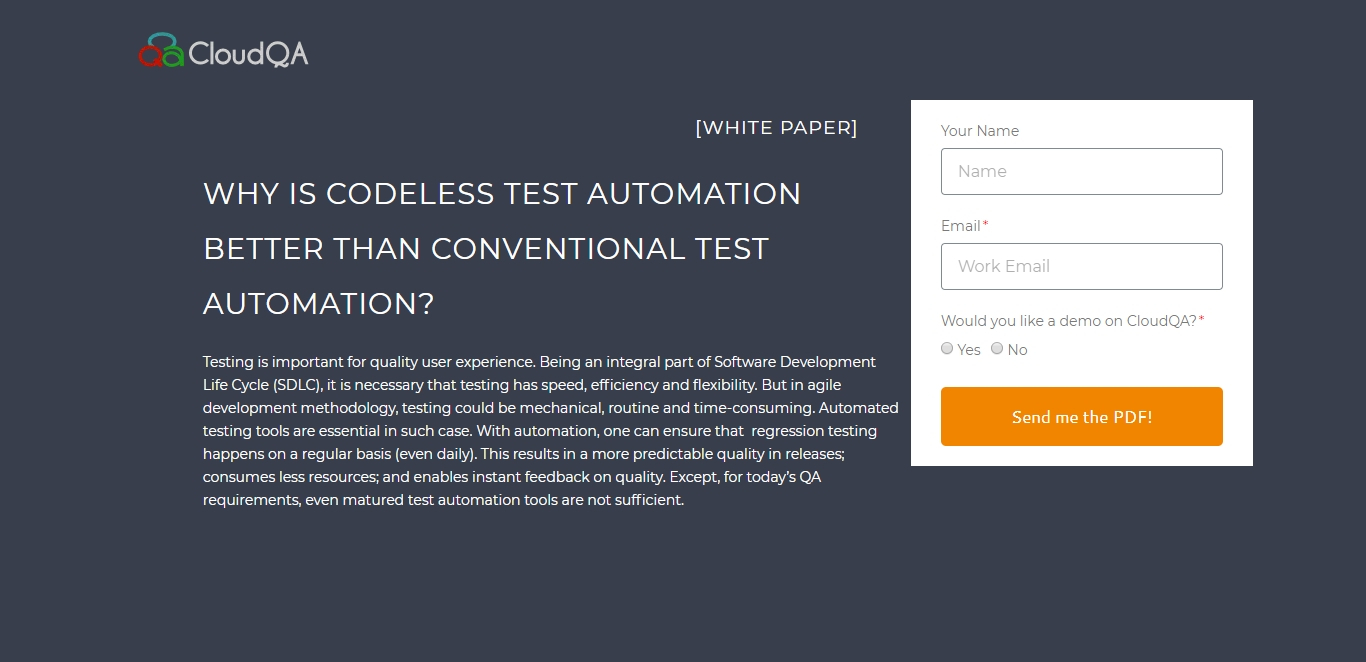
Why is Codeless Test Automation better than Conventional Test Automation?
Testing is important for quality user experience. Being an integral part of Software Development Life Cycle (SDLC), it is necessary that testing has speed, efficiency and flexibility. But in agile development methodology, testing could be mechanical, routine and time-consuming.


